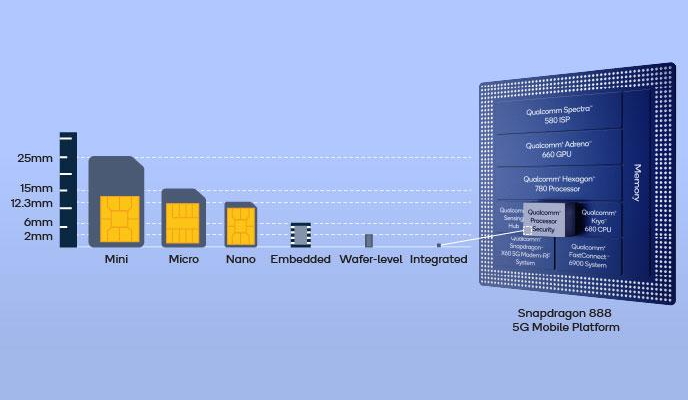While eSIM requires a separate chip to be installed, iSIM is implemented directly into the phone’s main processor which leads to better performance, increased memory capacity, and improved space utilisation according to Qualcomm. The ultimate vision of the iSIM is to have SIM’s functionalities across all types of consumer products, including laptops, VR headsets, and Internet of Things (IoT) devices. Back in August, Qualcomm announced the inclusion of iSIM technology in its Snapdragon 888 5G chipset. More recently, Qualcomm, Vodafone, and Thales demonstrated a proof-of-concept in Samsung’s R&D labs in Europe using a Samsung Galaxy Z Flip3 5G powered by a Snapdragon 888, which ran on Vodafone’s network and Thales’ iSIM operating system. The iSIM technology has been in the works for a while now since it was first announced by Arm back in 2018 and Vodafone itself jumped into the foray within the same year. Other companies that are already looking into the iSIM include Sony, which recently worked with Kigen and floLIVE to develop iSIM integration into Sony’s Altair ALT1250 IoT chipset, while Nokia launched its own cloud-based iSIM management platform called Secure Connect. While the demonstration can be seen as an early sign that iSIM may finally be ready for mass users, neither Qualcomm, Vodafone, nor Thales have provided a timeframe for when exactly consumers can expect iSIM-enabled devices to be available in the market. (Source: Qualcomm / Vodafone / Thales.)
